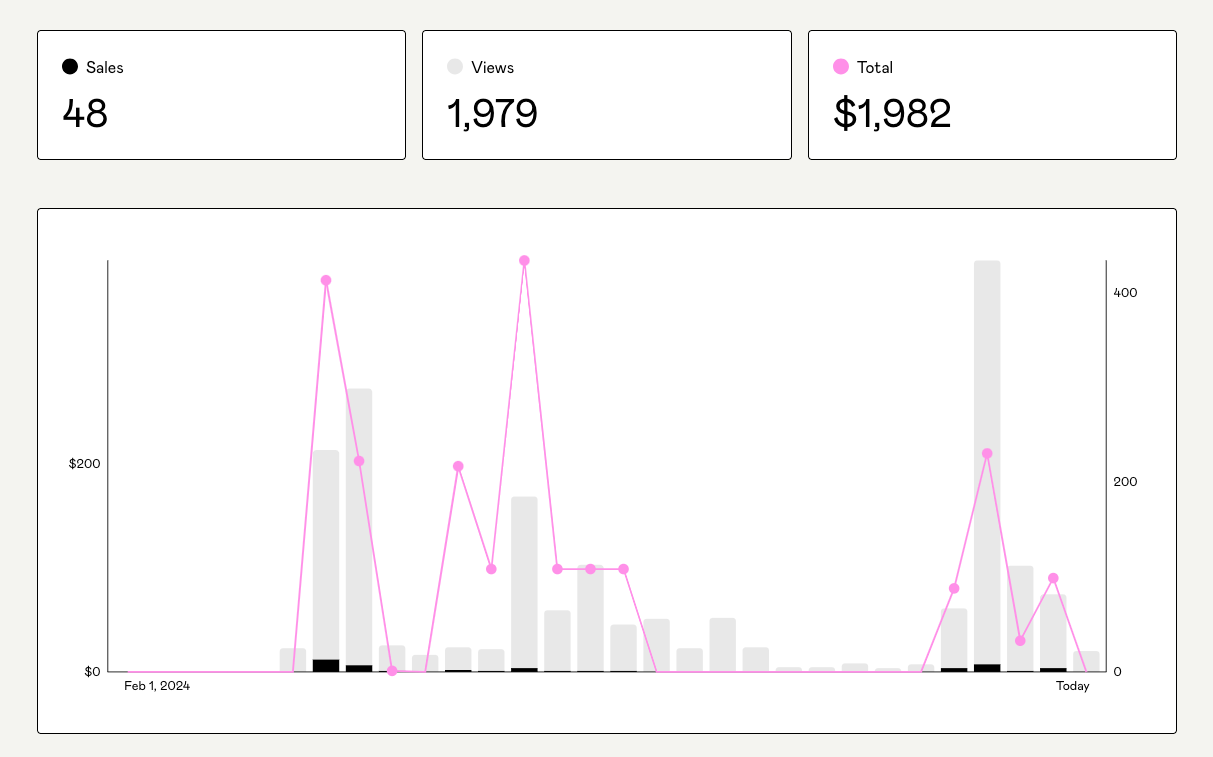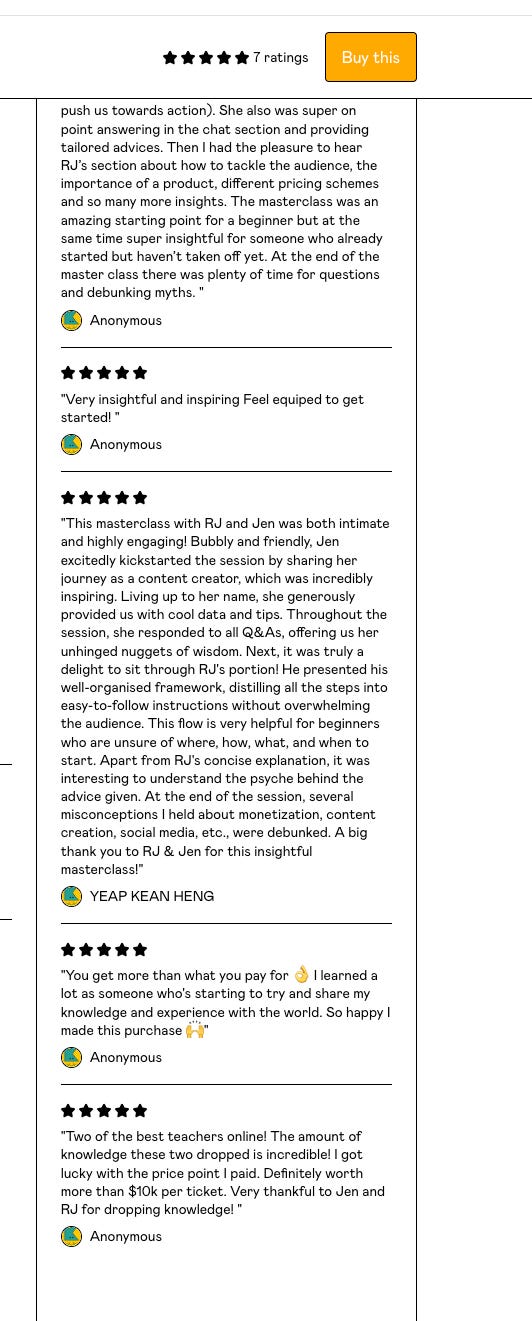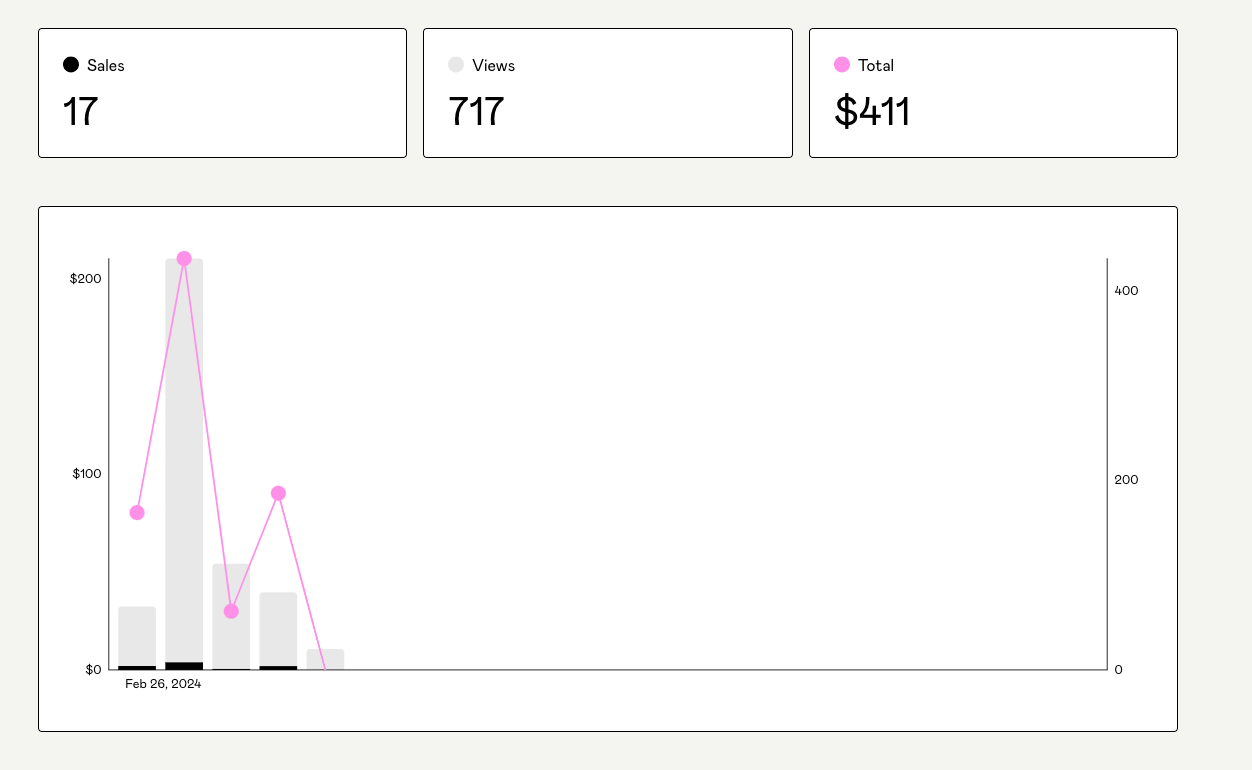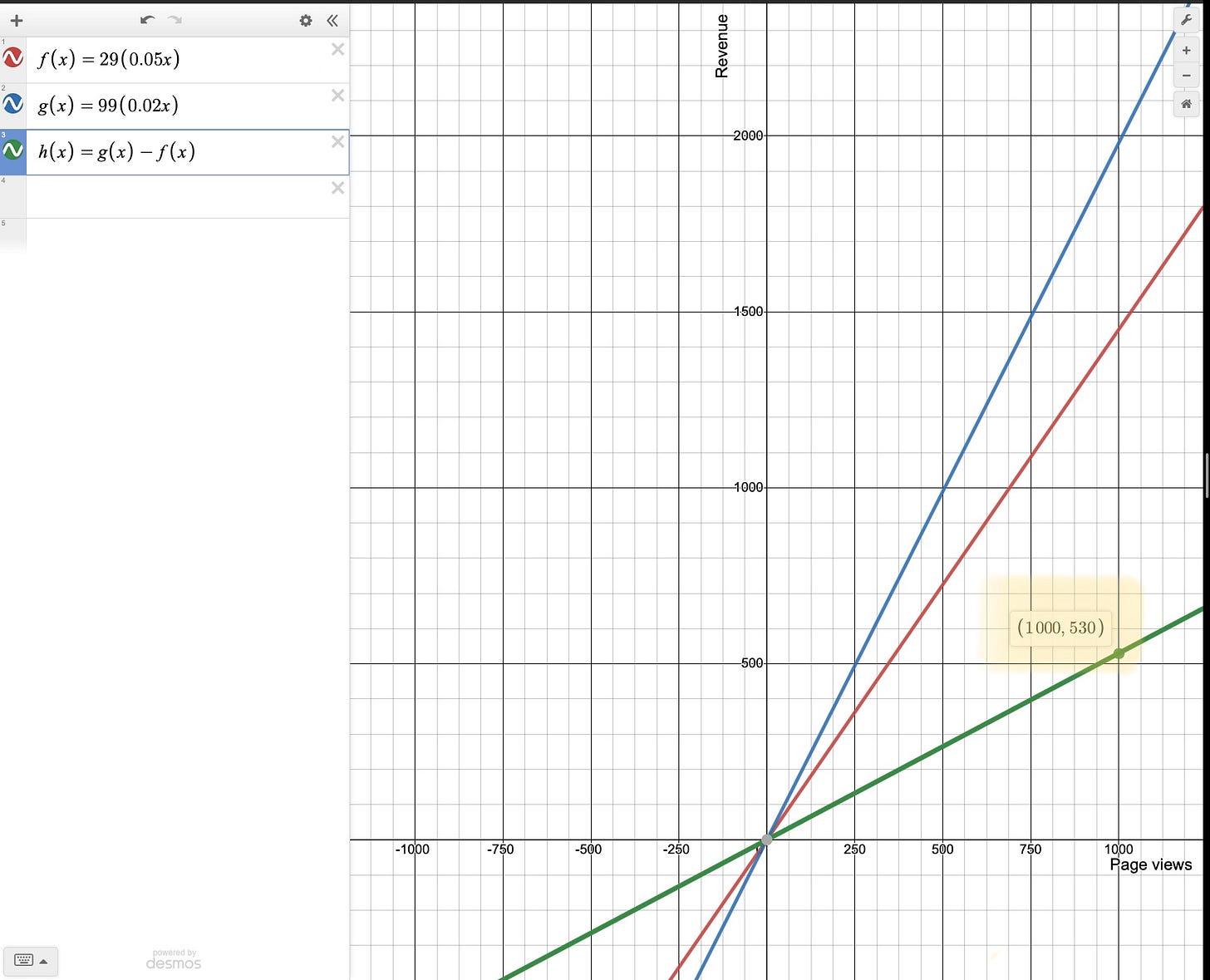What’s good young and eager mind?
Gonna jump right in.
Jen & I made $1,982 by collabing on our First Sale Masterclass.
With the benefit of hindsight, I did some things well and screwed some things up.
I wanna share the learnings with you.
The gucci
Pre-selling before we made anything
I wanted to validate demand so we focused on getting sales first.
This’ll be unsurprising to you but the fast pace kinda shocked Jen. I’d strongly urge you to move fast when you’re launching your own stuff as well. Don’t get stuck in the contemplation phase.
Product strategy
By selling a 2-hour masterclass, we didn't need to invest a ton of time in the same way we would if we'd sold a complicated course or software product.
I've been doing this stuff for over a decade and Jen's could just cover her experience growing her Instagram.
Using scarcity
I opted for a staircase pricing architecture and chose to sell 20 tickets at $29.
Those sold out immediately and I captured overflow with a waitlist.
Then we opened 20 more tickets at $99 but those proved harder to move, so I halved it to 10 tickets.
Capping the number of seats gave us a legitimate reason to use urgency and scarcity in our emails/social media and we sold out at both prices.
Getting social proof using bribes
Instead of hoping we'd get testimonials, I bribed customers.
If they gave us a testimonial within 48 hours after the masterclass, they'd receive the full slide deck Jen made as well as my full guide of the masterclass.
Both of us had to cut a lot of stuff out so we could use that as an incentive.
The masterclass itself
I expected that to be the easiest part and it was. In fact, at a 1-3% refund rate, we could've gotten 1-2 refunds (accounting for small n variance) but we got 0 which was a great sign.
Not much else to share there, except that we included a Q&A which I always find a cute little hack because you're essentially paying me to get the highest possible qualitative market research.
Paying customers telling you EXACTLY what they're struggling with and what they're unclear on and whether or not your answer solved that pain point.
Selling the recording + bonuses
Jen & I also ran a 3-day cash machine.
Which is a simple 3-day flash sale during which visitors get 33% off the $30 recording.
That's brought in close to $411 so far with no extra work on our end.
When you’re cooking and are selling the main dish, think about ways in which you can sell natural byproducts like the gravy or even the cooking process itself.
The not so gucci
Unclear sales page
When we started selling the recording, I just added a line that said that the live event was over and the recording was now purchasable.
Despite making it an h1 heading, it still caused confusion for some.
There was also a "join the waitlist" button at the top of the "old copy" to capture overflow from when our live event was sold out.
This combination made some people hella confused.
So when Jen lmk, I quickly redid all the copy & removed stuff like the date of when the live event is happening, and moved the waitlist opt-in button to the bottom.
Bad science
I try to be scientific in a domain filled with mouthbreathers.
But because I was doing this as a collab vs. by myself, I used my intuition much more.
E.g.
- I changed sales copy (even headlines) during the campaign.
- We sent traffic to our page from at least 5 different marketing channels
- I halved the $99 tier when the sales velocity seemed too low.
- I added testimonials as soon as we got them.
All of this introduces variables in an environment that's already noisy.
The result of that is that I pretty much can't draw any conclusions.
Btw, this is one of the most frustrating things to me. Seeing mouthbreathers on X draw sweeping conclusions based on absolutely nothing. But unfortunately, nothing is more convincing to the general public than confidence.
Pricing
We did $580 with the $29 pricepoint and $990 with the $99 one.
Surely, the latter is better. Well, if you calculate what the conversion needs to be for the $99 to be better, we dipped below that a few days.
I created a simple graph after I had some data. At 1K page views and a 5% conversion at $29 and a 2% conversion at $99, we’d be making an extra $530 with the latter price point. Of course, all this stuff is science fiction when you’re dealing with a minuscule n.
A key complication is that the $29 tickets sold out instantly while we had to push the $99 significantly more over the course of a week.
Did we struggle more because the people who would buy had already bought? Or because the price was higher than the willingness to pay (max $ someone will pay)?
Your guess is as good as mine.
By selling the recording I anticipated getting some more clarity.
If no one would buy at $30, that strengthens the former hypothesis.
If we got a ton of sales, that strengthens the latter one.
We got 17 more sales which seems to point to some pricing sensitivity.
There are also practical concerns/preferences
The lower price point allowed us to sell 30 tickets and half showed up live.
15ish people is a great size for a class.
Had we sold the masterclass at say $200, we may or may not have made more but the class would've been much smaller.
Both Jen and I enjoyed the fact that there weren't like only 2 people on the call.
Having said all of this, my guess is that we probably would’ve made slightly more at a fixed $99 price point despite the lower conversion and higher effort required to sell.
However, I’m still happy we used a staircase pricing architecture instead. We got some nice attendance (which is also a more fun watch for the recording buyers), and lots of testimonials.
The key takeaways
• Low ticket ($29 or even $99) is hard to make money with. Even with a 70K audience. It can be done but you'd need a healthy, refreshing source of traffic & the perceived value needs to drastically exceed the price. Most aspiring/beginner creators view themselves a consumers, not businesses. So you’re selling B2C even though you might think it’s B2B. If possible, try to avoid selling information/expertise to consumers. It’s difficult.
• Raising prices is often a good way to make more money but it can require a new market segment or at least a change in positioning.
• Collabs are fun and more people in our neck of the woods should consider doing them.
I said it before but neither Jen nor I could've done as good a job alone. The product was 10x better by having 2 experts in their own domain serving the same customer.
It was also more fun cuz you can share the journey or just take a breather while your partner helps the customer.
• A big audience isn't everything. Despite Jen's 65K Instagram following, half the customers came from my tiny substack and her small premium newsletter list. (These were also the folks more comfy paying more.)
At the end of the day, $2K is not a ton of money but it's not bad for a 2 hour masterclass and it's always fun to get paid for your brain work instead of your hands work.
RJY
Wood & Water
P.S.
I got some space to take on new clients so if you need help with your marketing strategy, hmu.






Love the reflections. How did you meet Jen?
Who proposed the collaboration, and what expectations / terms did you have for each other?
Any recommendations on finding people with large audiences who might want to do something like this?
Will you be doing more of them, despite saying "If possible, try to avoid selling information/expertise to consumers. It’s difficult."?